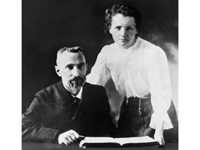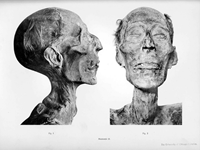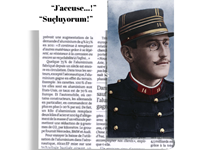While some people fear that breaking a mirror will bring bad luck for seven years, the roots of this superstition go back to ancient Greek and Roman societies. They attributed mysterious powers to reflected images.
When we examine Native American beliefs, we find that the Mayans had a different perspective on broken mirrors. In the 1st millennium AD, the Mayans used them in cities stretching from southern Mexico to western Honduras, not only as cosmetic accessories, but also as channels of supernatural communicatio Çokn.
MIRRORS AND MAGIC
Instead of glass, ancient Maya mirrors often consisted of dark, polished pieces of iron ore glued onto slate or wood surfaces. Mayan nobles wore these mirrors on their backs, displayed them on their thrones and placed them in their tombs.
The Mayan nobles looked into the mirrors to have mystical experiences, as they used various hallucinogens. Cracks in the mirrors would cause reflections to appear distorted, leading to the belief that communication with divine beings could be achieved through these images. Nobles hoped to find wisdom in the realms beyond the mirrors, which they associated with gods, ancestors and other spirits.
Maya artists depicted spirits in paintings and sculptures, often as fantastic creatures and chimeras. Sometimes they depicted nobles in dialog with chimeras, and sometimes they showed these beings as intermediaries who facilitated communication with ancestors and gods.
These dialogues often took place in dreams, trance and hallucinatory states, and were often between two mirror-wielding beings. Maya artists depicted these conversations as both spectacular and frightening, sometimes even bizarre.
YAXCHILLAN LINTELS
The most detailed depictions of interactions between gods and humans are found in carvings from the ancient Maya city-state of Yaxchilan.
Inscriptions show that in the 8th century, the ruler of Yaxchilan built a structure with three entrances. Instead of the traditional wooden beams placed at the top of each doorway, there were stone lintels. These stone lintels formed a three-part panel depicting various events from the lives of the king and his wife, such as their appearance before their patron deity.
Unfortunately, the original carvings of this structure in Mexico have been removed. The first two lintels, numbers 24 and 25, are on display in the British Museum, while the third lintel, number 26, is in the National Museum of Anthropology in Mexico City. These lintels are now displayed on the walls in both museums, but they were originally meant to be seen from below during the Classical period.
MAGICIANS
The paintings on lintels 24 and 26 depict rituals believed to have taken place before and after appearing before a deity. The painting on lintel 24 shows the ruler holding a burning torch while his wife performs a painful ritual: She passes a thin string filled with obsidian fragments through her tongue. These obsidian fragments must have caused significant blood loss, believed to have spiritual significance in ancient Mexican religions, as depicted in the form of droplets on the queen's face.
According to the depictions, the blood also drips into a bowl of paper to be burned by the king. Lintel 26 shows the aftermath, with the king and queen standing together. Still bleeding, the queen gives her husband his ceremonial helmet and prepares him for battle.
Although the actions in these lintels take place within the confines of the ordinary world, lintel 25 marks a different place. The texts in this lintel describe a series of magical events that culminate in the appearance of the city's patron deity.
Lintel 25 visually pushes the boundaries between the real and the fantastic. The image shows smoke rising from a bowl and a large, skeletal serpent appears in the smoke. This two-headed serpent acts as a conduit for the god's journey from his realm to the realm of the queen. At one time, he may have been a real human being, mummified after his death, but here he is depicted as a deified warrior god emerging from the mouth of a serpent. Lento 25 shows the queen balancing a skull on her arm, gesturing upwards towards the smoke as the god removes his mask.
Lento 25, similar to many magical texts, implies that the queen sought guidance from a deceased person, but the carving does not reveal the content of this communication. There is, however, one more intriguing detail: The majority of the text on Lento 25 is written backwards and was probably designed to be seen with a mirror by ancient Maya sorcerers or seers.
From an architectural point of view, part of the text remains outside the doorway. This part is written from left to right, in typical ancient Maya script. But the moment a visitor crosses the threshold and looks up, everything changes. The words and images are written backwards, as it is believed that the visitor has crossed from the human world into the supernatural realm.
Source: arkeofili.com


 Nielawore
Nielawore









Yorumlar
Really good
Yorum yazmak için lütfen giriş yapınız